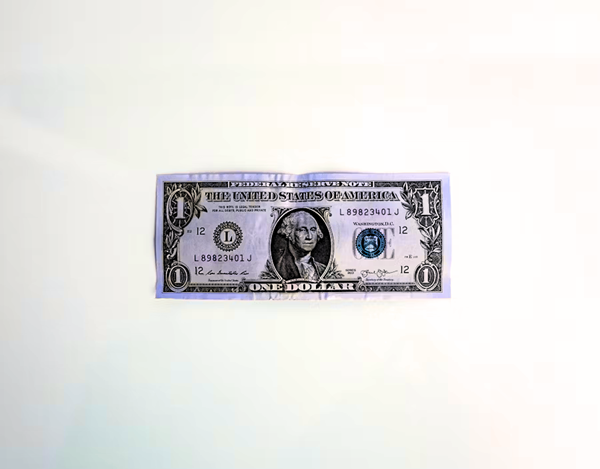A traveler wakes up in Buenos Aires, Argentina, the day before her phone screen was torn to pieces. At the repair shop the tech guy tells her “Repararlo seran 146,600 pesos, 400 dolares al cambio” (“The new screen will be 146.600 pesos, 400 dollars at exchange rates”). But her bank notification shows that she has been charged double the amount. She, like many tourists, has been victim, not of a scam, but of the ‘dolar blue’ phenomenon.
The illegal ‘blue’ currency is popular amongst Argentineans who prefer the stability of the official dollar but are restricted by the government to use it. However, the fake currency has become an inconvenience for international transactions from unaware tourists as prices at the official rate are double.
However, the real problem resides in the effects the parallel currency has had in Argentina’s economy.
The origins of the blue dollar
Amongst the effects that ‘dolar blue’ has on the economy are the rise of inflation, the lack of transparency, the loss of confidence in the pesos , and the complication of foreign investments. Which become a never-ending cycle as the demand for black market dollars rises when inflation devalues ‘el peso’, which simultaneously overvalues dollar blue decreasing Argentineans purchase power, accelerating inflation.
The demand for the illegal blue currency grew with ‘El Cepo’, imposed in 2011, which restricted Argentineans from purchasing more than 200 dollars a month. The reason why Milei has already given the restriction an expire date, January 1, 2026.
Last year, Milei’s government achieved narrowing the gap between the official and the unofficial dollar to 1.45%, helping reduce the demand for the black market currency and stabilizing the value of the peso.
New Argentina
Argentina wakes up on the 19th of November of 2023 with the words of the new president, Javier Milei: “Today starts a new Argentina”.
His message was immediately welcomed, as thousands of white and blue flags were raised in the air.
Argentina is in many ways a new one, with the population below the poverty line going from 40.1%. to 52.9% under his mandate. However, Argentinian flags are still being raised, this time to protest the increasing inequality, showing that the ‘dolar blue’ gap is not the only one that needs narrowing.
Unemployment rates keep rising, together with the prices of products and energy. The price of eggs went up by a 280% while the price of gas increased a 715%. Still, Milei keeps on cutting public subsidies from people in a situation of vulnerability.
And while the need for an economic reform was extreme, Argentineans are also expressing the need for a social reform:
“In front of our elderly, and pensioners, that scream in pain reclaiming care and attention, an irresponsible government responds with cruelty, hate and violence”, communicated the General Federation of Labor amidst the events that followed the protest where 20 people were injured and 120 people arrested.

Milei the ‘MAGA’
In an interview for The Free Press Milei answered: “The picture is terrible, but the film is fabulous”, when asked what he would say to the Argentineans who can barely afford a living.
Milei’s economic tactics, as unusual as his character, have been looked up by many as he has achieved bringing Argentina’s inflation from 211% in 2023 to 118% in 2024 and increased the growth of the internal GDP, which stands at positive 5%, attracting the attention of Trump, who baptized him as “a MAGA person” and his “favourite president”, choosing him for his first foreign leader meet up.
Argentina’s ties with the USA are growing closer as Milei is seeking a free trade agreement and advancing in his proposal to dollarize Argentina. At the same time, the ties with ‘Mercosur’ are growing colder as Javier described it as a “prison”, for not allowing individual deals between member countries.
A game of cards
The tantric sex teacher, dog cloner, rock singer and current president has been playing a draconian economic game of cards with the Argentinean economy.
His first move was to devaluate the peso by 50% aiming to narrow the gap between the official dollar and ‘dolar blue’.
Simultaneously, he lowered the fiscal debt by cutting on public subsidies, lowering the monetary emission and deregulating the economy to foment private inversion.
Milei’s second phase tackled bureaucracy issues through relaxing labor laws, allowing cheaper labor, privatizing public owned businesses to reduce fiscal debt and eliminating 90% of taxes simplifying and cheapening the tributary task.
Meanwhile, Milei has also started negotiations with exterior inventors and the International Monetary Fund (IMF), with the aim of getting a new financing programme, in other words a new loan.
Milei’s ideas are as “bold” as a chainsaw, as the IMF claims, and so are the numbers his program has caused.
The future in the hands of Scissorhands
Argentina is in midst of a transformation. While the list of victories Milei has accomplished is long, so is the list of the people of Argentina whose living conditions have worsened.
The blue dollar that the blue flag hides remains a symbol of the country’s lack of transparency and financial instability. The question then is whether the ‘Scissorhands’ approach will create sustainable growth or leave behind scars too deep for recovery. The future of Argentina hangs precariously between promise and gamble.


